Ten Rains: Auspicious Omens Album
(十雨征祥图册 / Shí Yǔ Zhēng Xiáng Tú Cè)
—A Qing Dynasty Masterpiece by Dong Gao (董诰, 1740–1818)
Overview
This 10-panel silk-scroll album, housed in the National Palace Museum, Taipei, captures the poetic beauty of rain across four seasons through meticulous ink and color landscapes. Painted by Dong Gao, a leading Qing court artist and statesman, the work merges imperial elegance with Daoist reverence for nature’s cycles. Each panel pairs a rain-themed scene—such as Spring Rain Over Bamboo and Stream or Night Rain in the Xiao-Xiang Region—with poetic inscriptions by the Jiaqing Emperor (r. 1796–1820), blending art, poetry, and cosmic symbolism.
Translation & Cultural Context
Album Structure
- 茅斋赏雨 (Rain Appreciation at the Thatched Studio)
- Translation: A scholar contemplates rain from a humble thatched hut, surrounded by pines and bamboo.
- Jiaqing’s Poem: “Heaven’s sweet dew bathes all lands; / Joy fills my rustic home. / The jade pot holds spring’s light— / Rain nourishes my nest of pine and bamboo.”
- Symbolism: The hut represents humility, while pines and bamboo embody resilience and scholarly virtue.
- 小楼听雨 (Listening to Rain in the Pavilion)
- Translation: A pavilion perched above a valley, where the sound of rain mingles with blossoming apricot trees.
- Cultural Note: Rain here symbolizes renewal; the “red apricot blossoms” (红杏) evoke poetic metaphors for fleeting beauty and intellectual reflection.
- 竹泉春雨 (Spring Rain Over Bamboo and Stream)
- Translation: Bamboo groves along a stream shimmer under spring rain, their leaves echoing like “phoenix calls.”
- Philosophical Link: Bamboo (竹, zhú) symbolizes integrity, while the phoenix reference ties to Daoist beliefs in harmony between humanity and nature.
- 潇湘夜雨 (Night Rain in the Xiao-Xiang Region)
- Translation: A moonless night on the Xiang River, where rain evokes the mythical “Xiang Goddesses” (湘妃) mourning their lost love.
- Historical Context: The Xiao-Xiang region (modern Hunan) is famed in Chinese poetry for its melancholic beauty and literary lore.
Artistic Significance
- Gongbi Technique:
- Dong Gao’s precise brushwork captures textures like rain-drenched pine needles and rippling streams using mineral pigments (e.g., azurite for distant mountains, malachite for foliage).
- Imperial Collaboration:
- The Jiaqing Emperor’s poems, inscribed in gold ink, transform the album into a dialogue between ruler and artist. For example, “Rain nurtures crops, farmers rejoice— / A promise of abundance” (野舍時雨) reflects Confucian ideals of benevolent governance.
- Seasonal Symbolism:
- Rain is depicted in varied forms: gentle spring showers (春雨), nourishing summer storms (甘雨), and autumnal mists (霖雨). Each aligns with the 24 Solar Terms, a traditional agricultural calendar.
Artist Background
Dong Gao (董诰) served as Minister of Works under Emperor Qianlong and Jiaqing. Alongside his political career, he co-edited the Siku Quanshu (四库全书), China’s largest literary encyclopedia. His landscapes, influenced by his father Dong Bangda (董邦达, “Elder Dong”), epitomize the Qing court’s fusion of literati elegance and imperial grandeur. The father-son duo, known as “Big and Little Dong,” revolutionized Qing painting by blending Southern Song lyricism with meticulous detail.
Cultural Parallels
- Comparative Art: Similar to the Peace and Spring Auspices Album (平安春喜图册)[^previous], which pairs magpies with winter flora, this work uses rain as a metaphor for cosmic balance.
- Global Context: The thematic focus on weather mirrors European Romantic landscapes (e.g., Constable’s storm studies) but emphasizes philosophical rather than emotional expression.
Legacy & Accessibility
- Digitized by the National Palace Museum, the album is accessible for virtual study, with high-resolution images highlighting Dong Gao’s layered ink washes and the emperor’s calligraphy.
- Exhibited in 2024’s Rhythm of the Cosmos: Qing Dynasty Nature Paintings (Shanghai Museum), contextualizing it within China’s ecological aesthetics.
References
: National Palace Museum archives on Dong Gao’s works.
: Scholarly studies on Qing Dynasty imperial poetry and painting.
Note: For deeper exploration, visit the National Palace Museum’s digital platform: https://theme.npm.edu.tw.
Full Translation of Scenes & Poems
(Selected Highlights)
新荷驟雨 (Sudden Rain Over Lotus Pond)
- Translation: Storm clouds burst above a water pavilion, rain pelting lotus leaves like “a million pearls on jade plates.”
- Jiaqing’s Poem: “Black clouds unleash torrents; / Lotus leaves dance in the storm. / These jewels surpass pearls from Hepu— / Blessing our fields with abundance.”
- Symbolism: Lotuses symbolize purity amid adversity, while pearls (wealth) and rice (sustenance) reflect agrarian prosperity.
名亭喜雨 (Joyful Rain at the Famous Pavilion)
- Translation: A tribute to Su Shi (苏轼), the Song poet who celebrated rain’s life-giving power.
- Cultural Note: The pavilion’s name derives from Su’s “Rain Pavilion Record” (喜雨亭记), where rain ended a drought, symbolizing ideal governance.
This album transcends mere landscape painting, offering a meditative journey through rain’s transformative power—a testament to Dong Gao’s mastery and the Qing court’s intellectual depth.

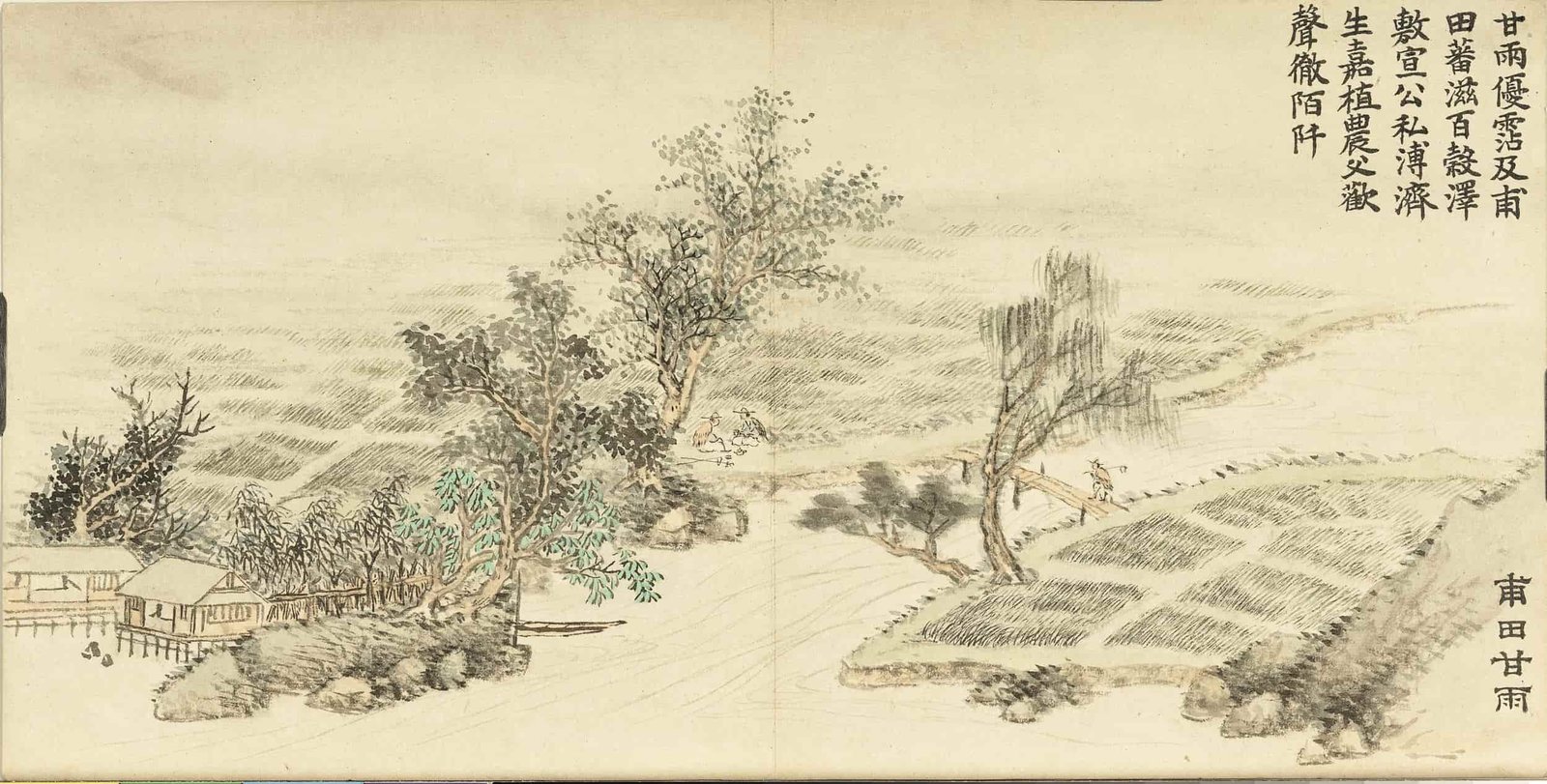
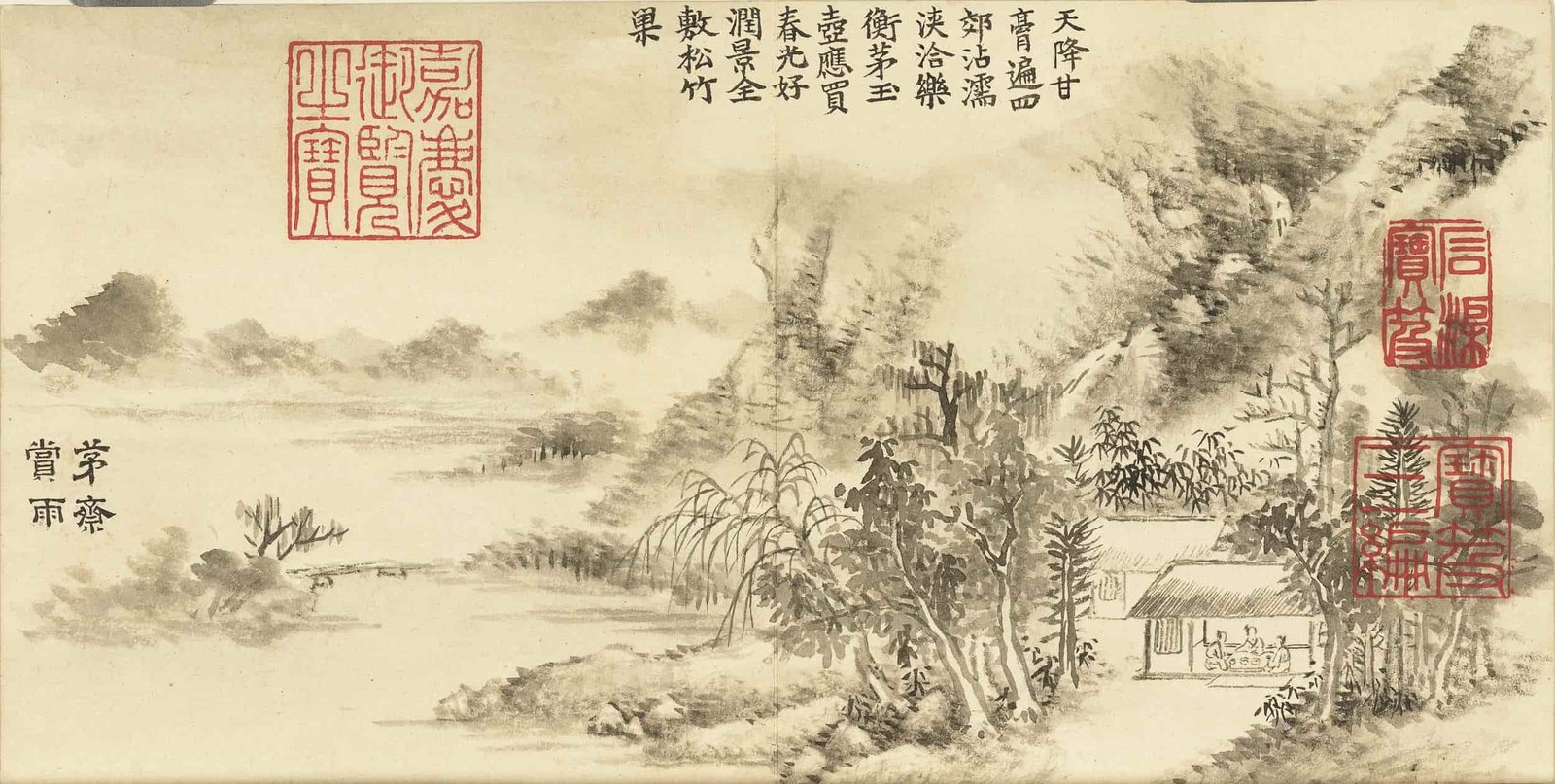
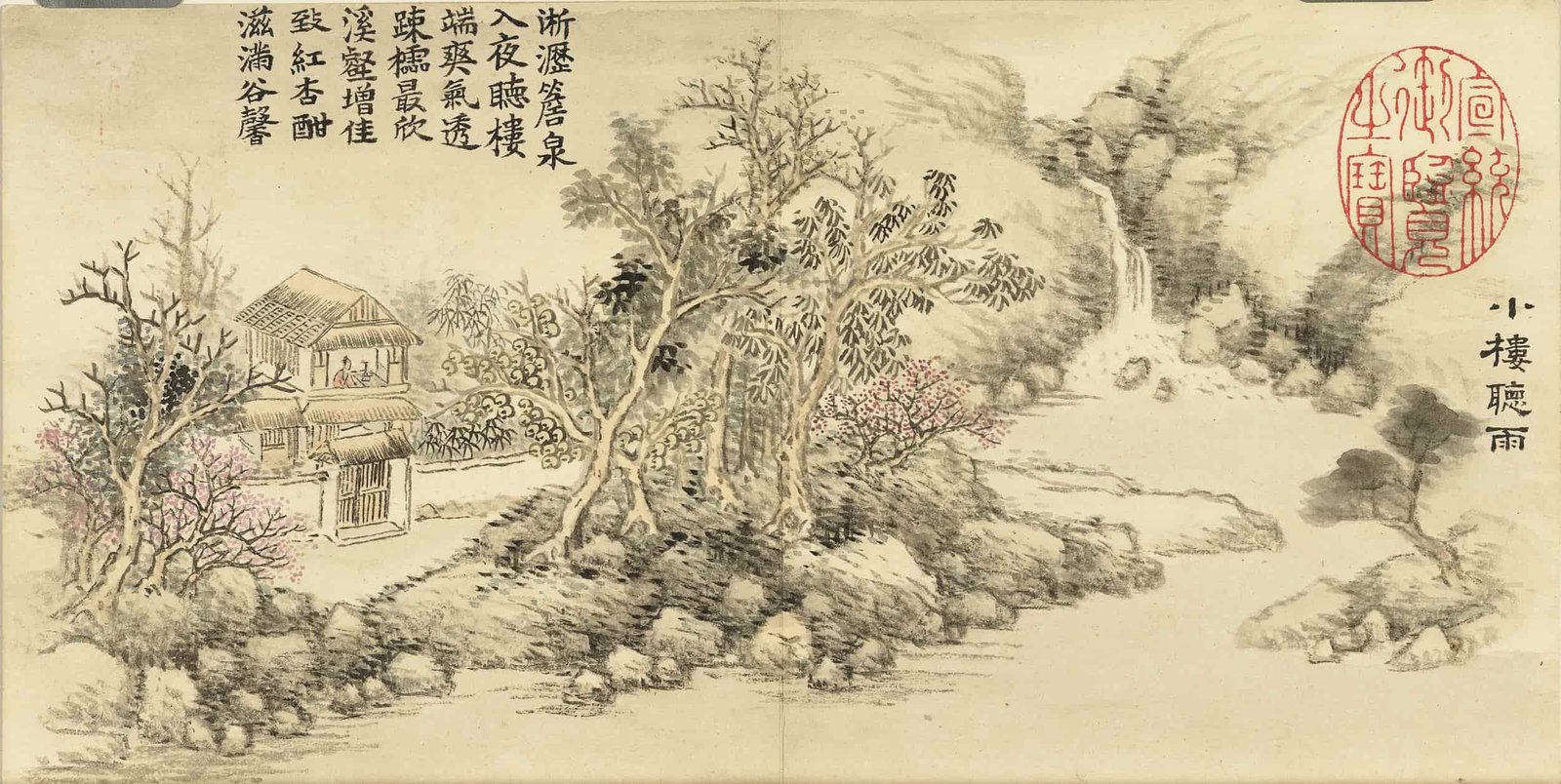
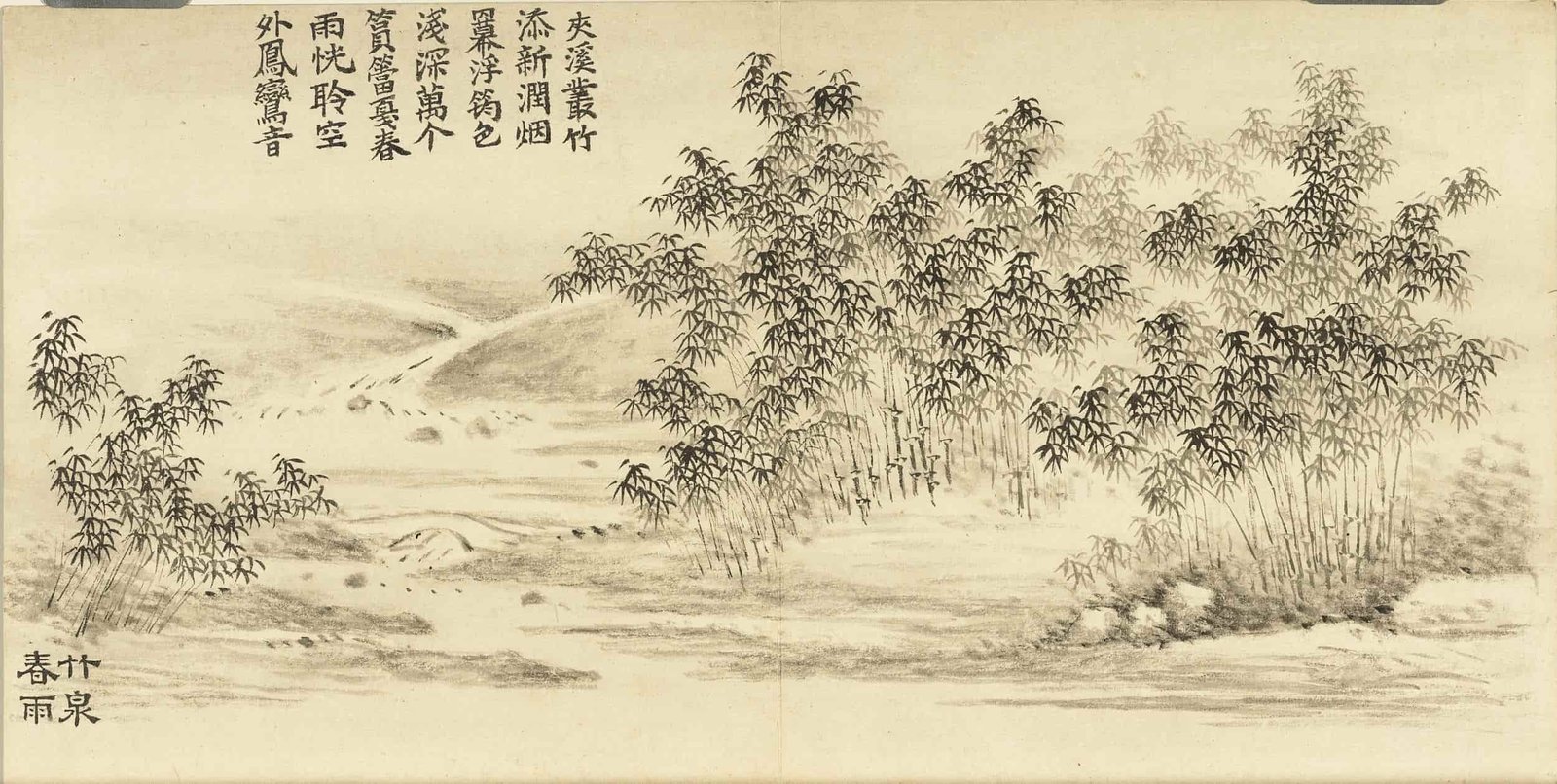
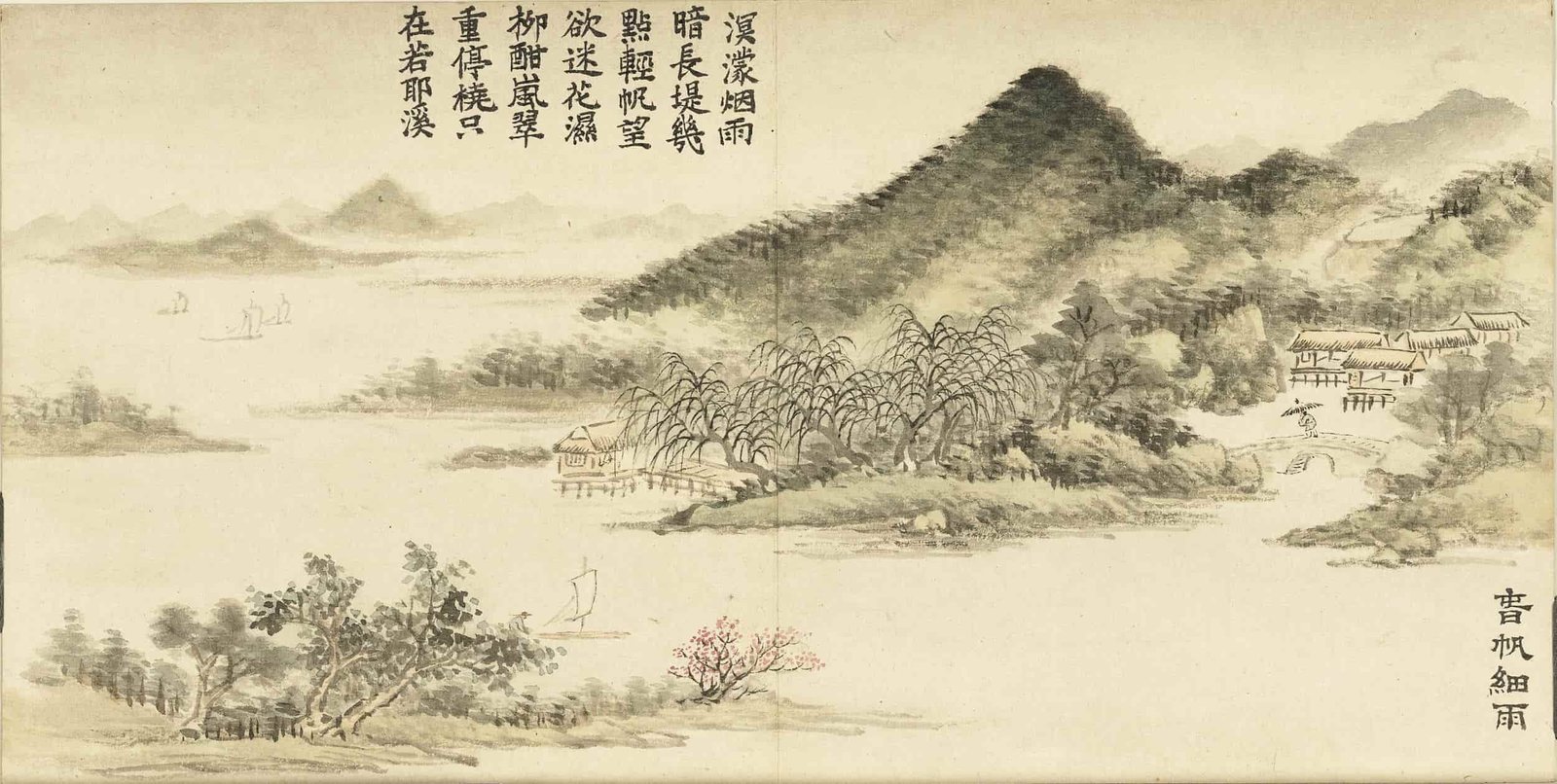
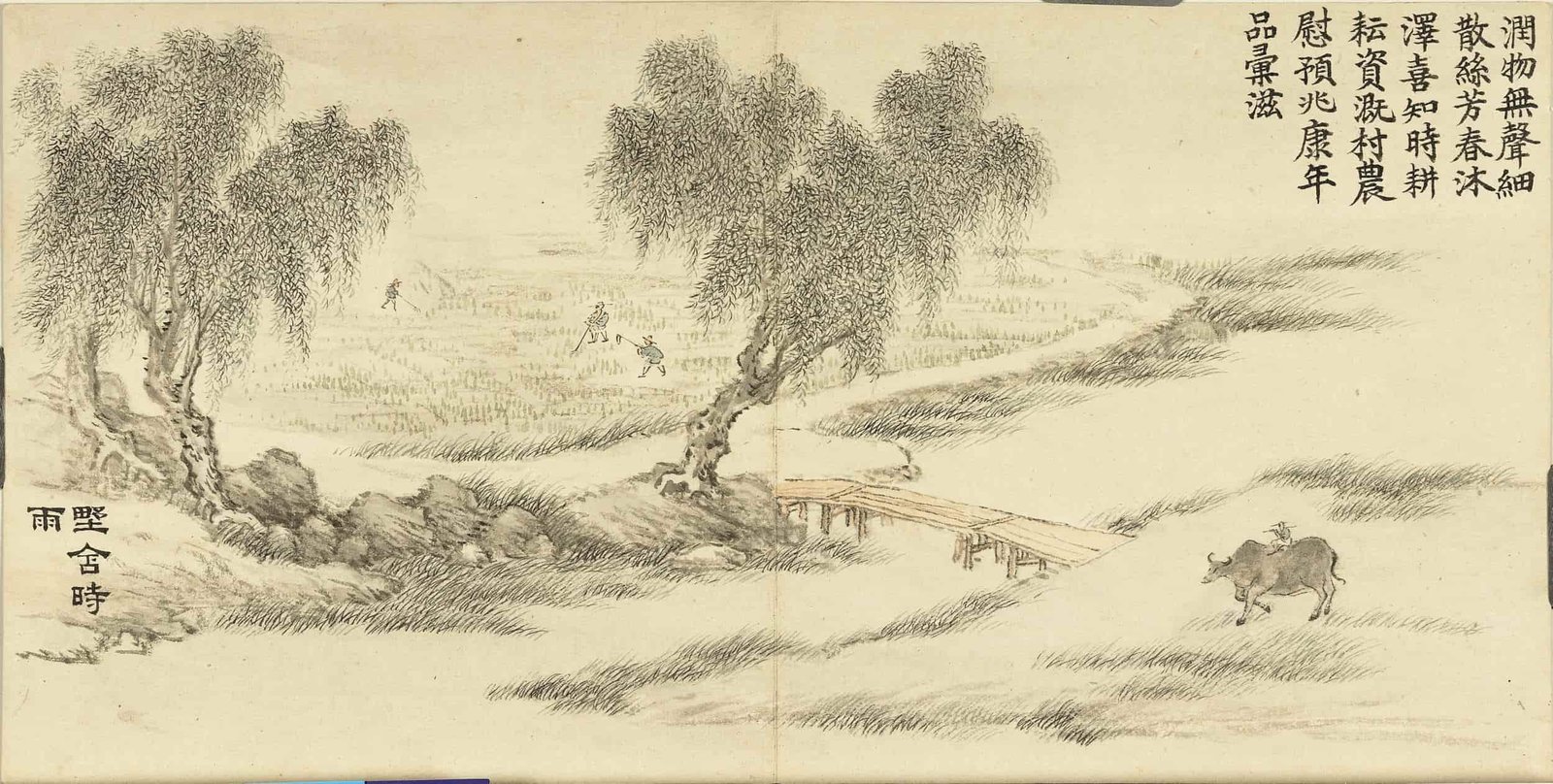
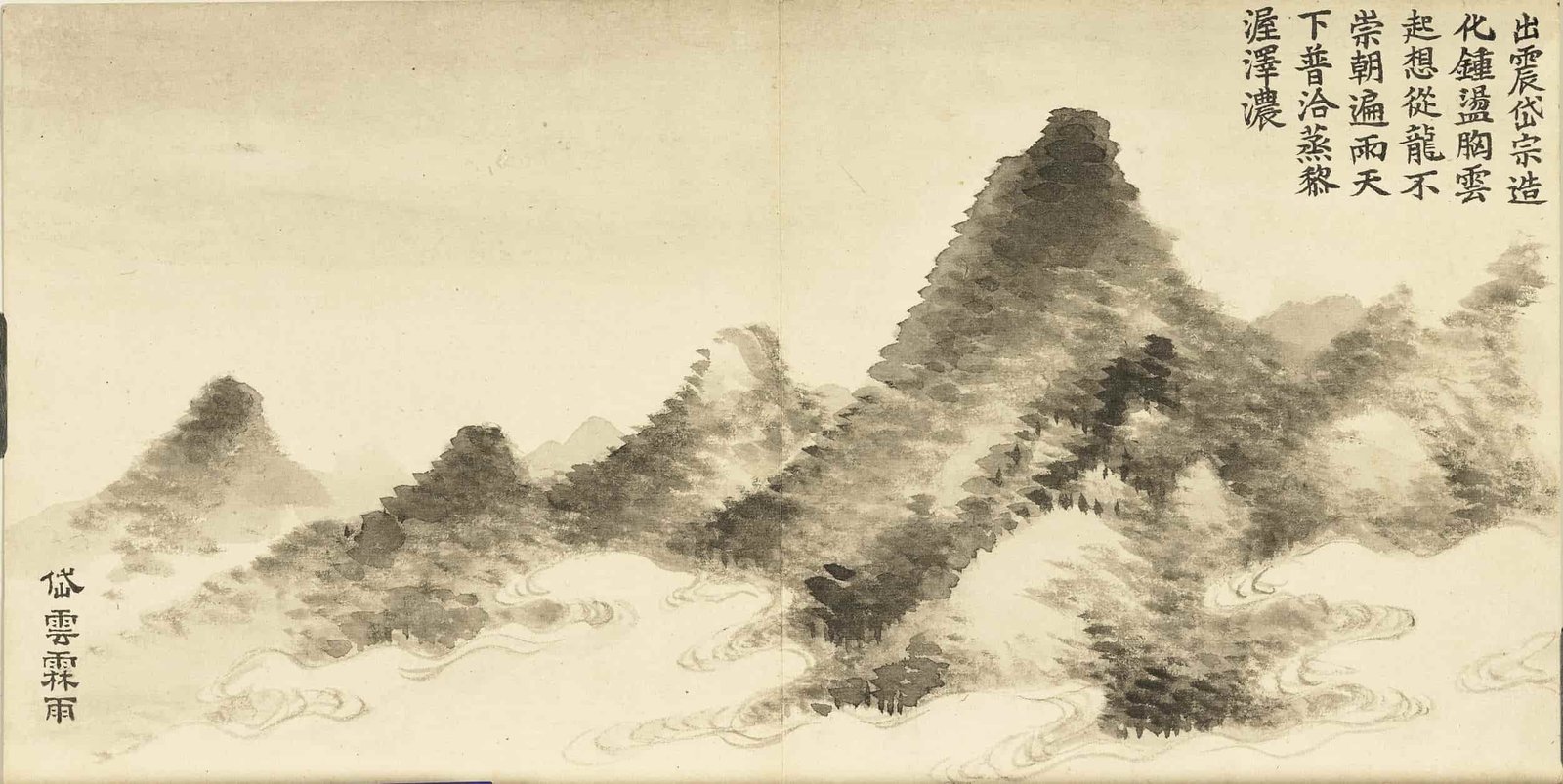
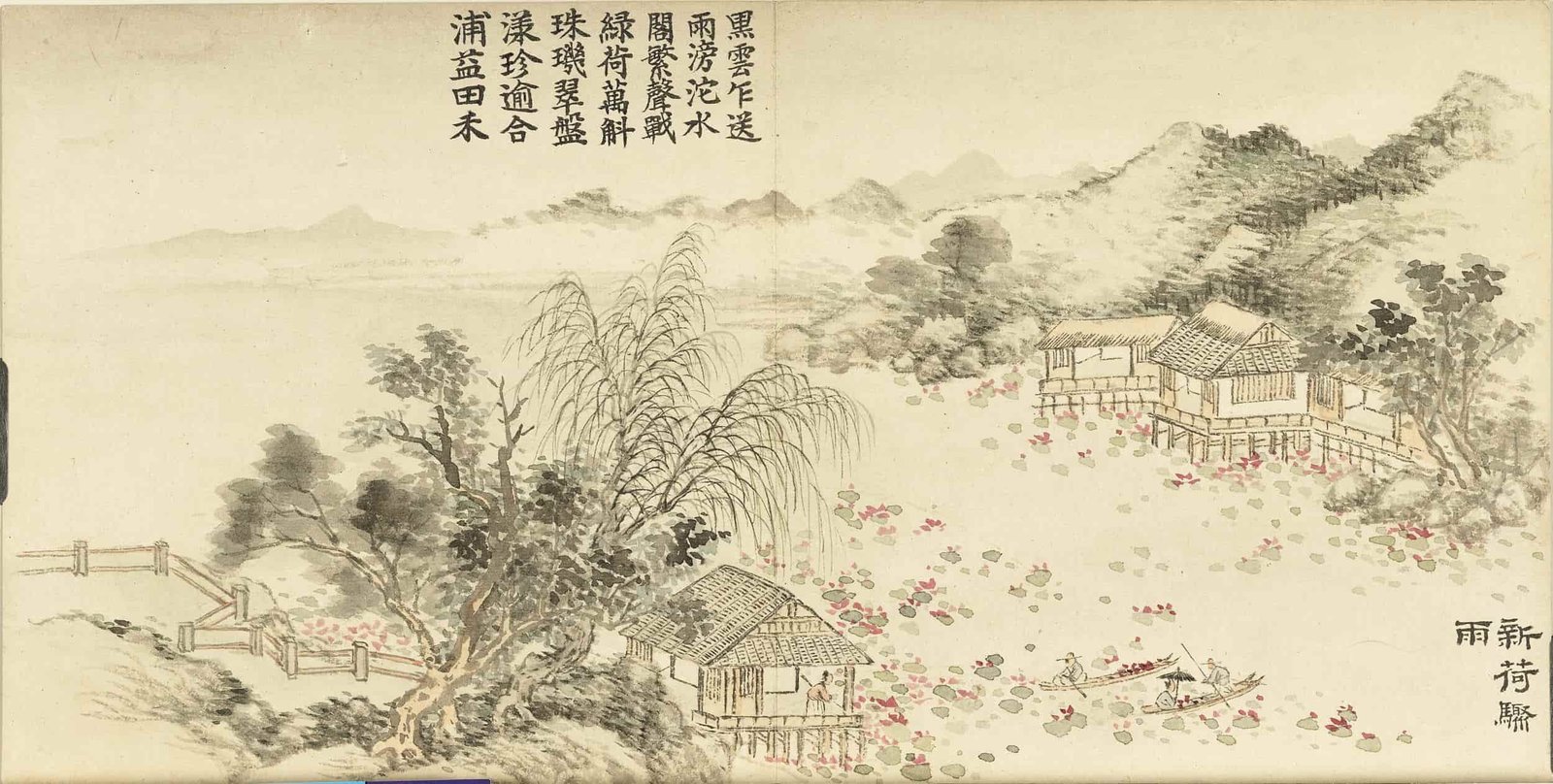
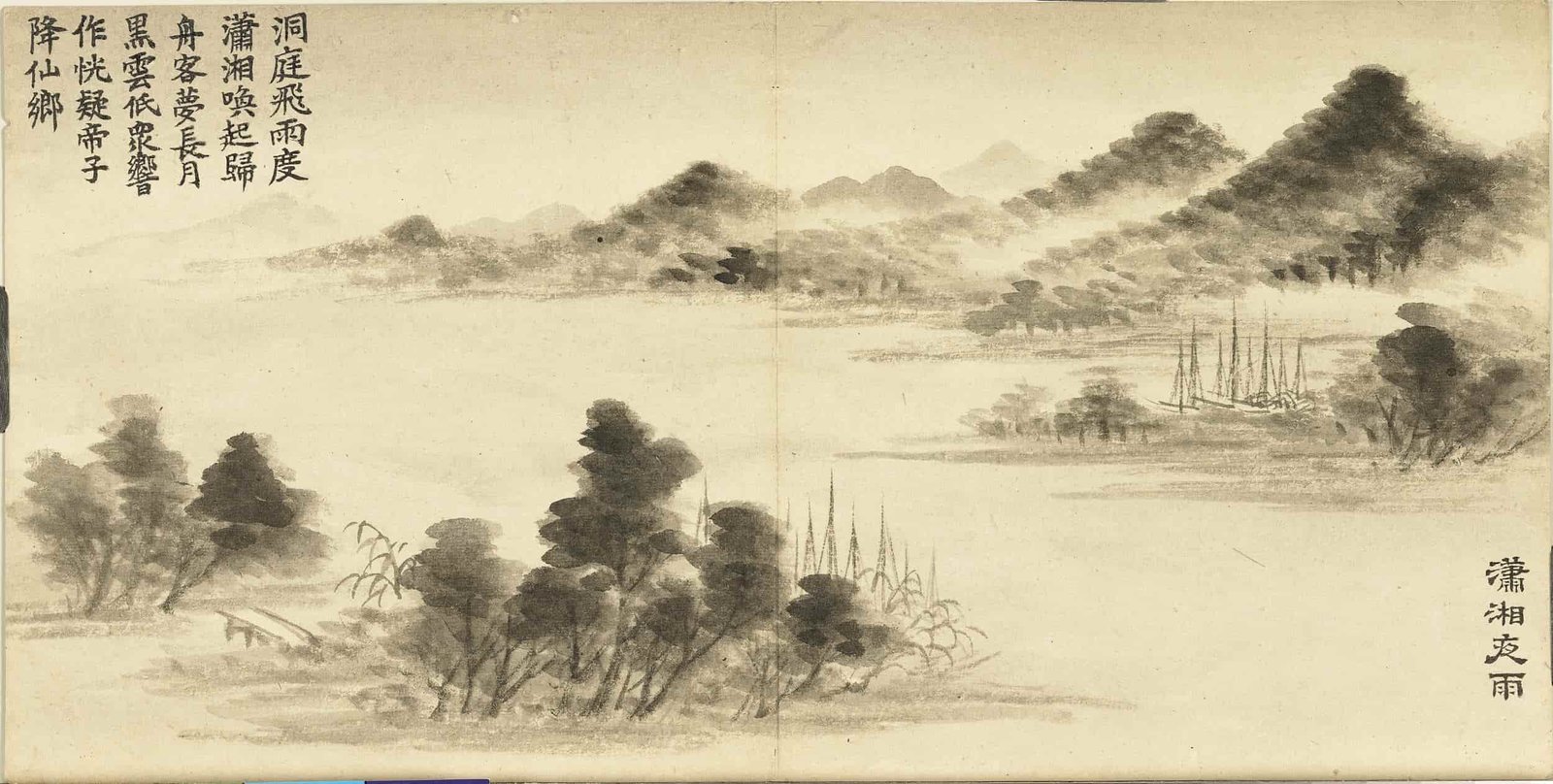
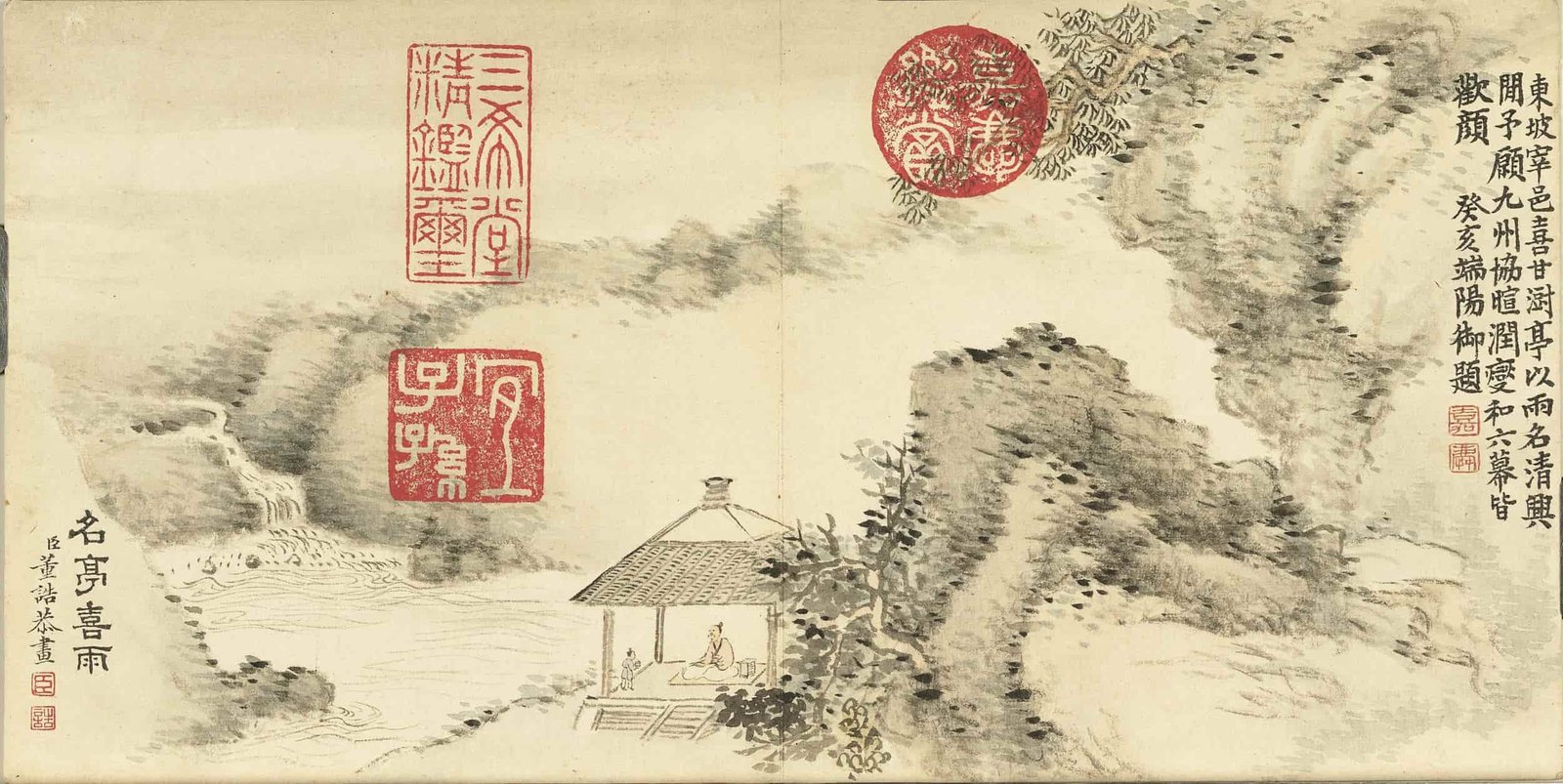
评价
目前还没有评价